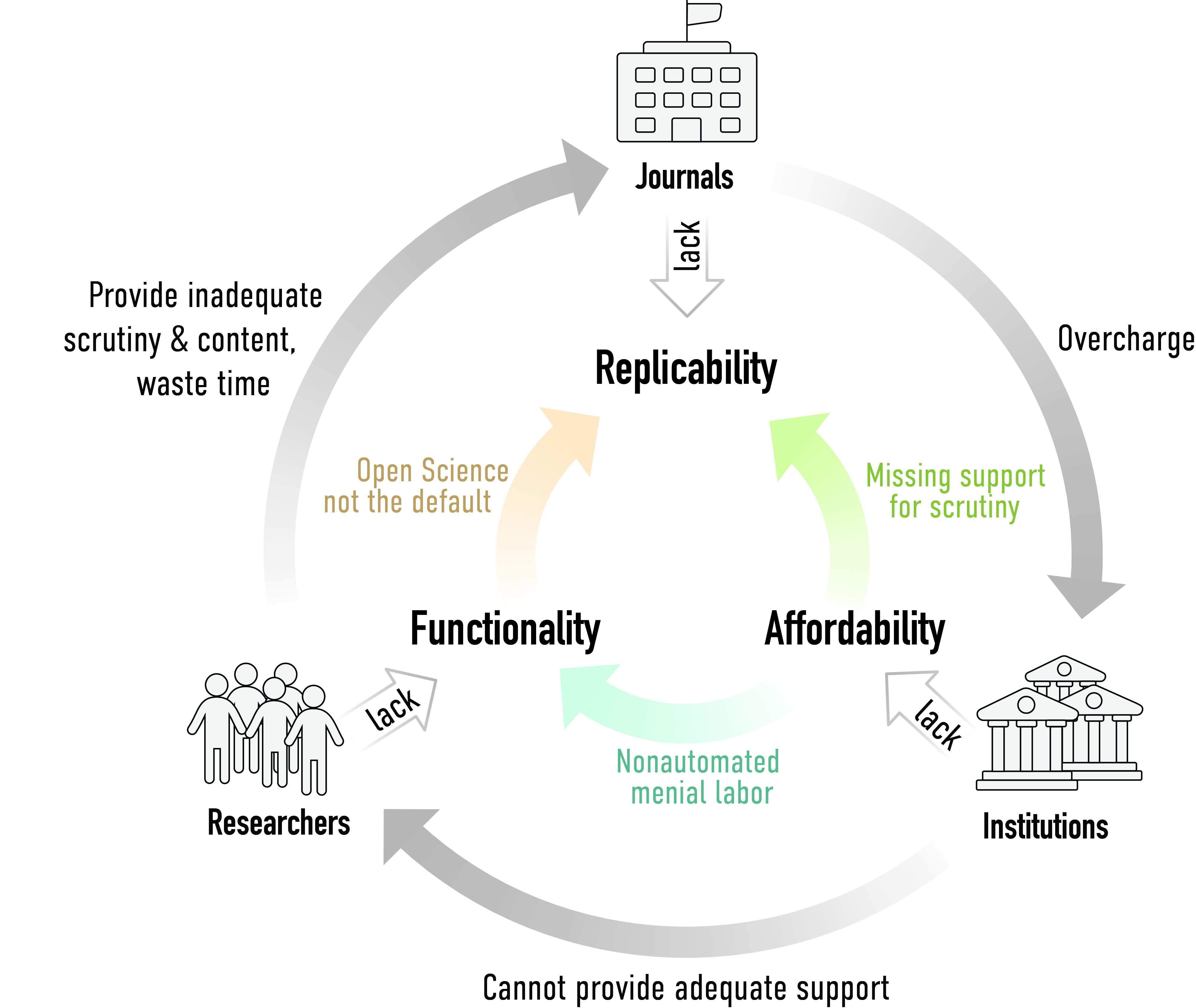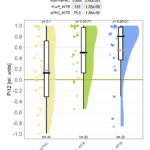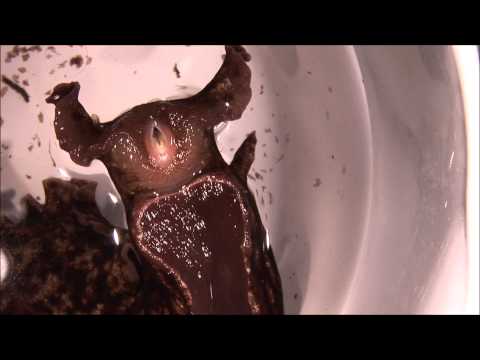I have been involved in the open science movement for nearly 20 years now. By now, it seems to me the problems have been clearly recognized and formulated, the experts agree on the necessary technical solutions (replacing the journals) and the funding is available. And yet, academia keeps trying to put band-aids on an unfixable, FUBAR system, despite all the obvious signs of decay, the counter-productive effects of the band aids and the waste of it all. Being merely a science nerd, I lack the word-smithing abilities to put my frustration into prose. In my helplessness, I described how I perceived the situation to an LLM – it’s about language, after all – and asked it to write a short story. I can’t say anything about the quality of the writing, English is not my first language and the author is only an LLM after all, but in a weird and funny, yet somewhat melancholic way, it does capture the, to me at least, most important aspects. But that’s probably just because I recognized my idea in the story, and no-one else will. No matter, it works for me. In my experience, Dr. Blenkinsop (no intended relation to any potentially existing persons with this name) is only all too representative:
“Edgewise”
By Roger T. Blenkinsop, PhD
Plenary Speaker, Fellow of the Anthropocentric Perimeter Institute, Vice Chair of the Committee on Edge-Event Forecasting (EEF)
Look, all I’m saying is: if people could fall off the edge of the Earth—and let’s be honest, it still hasn’t been definitively proven that they couldn’t—then wouldn’t we all feel like jackasses for not having built the fence?
That’s what I asked Marcy last week at the airport, and she gave me that look. The one that means, Roger, you’re being embarrassing in public again. But I stand by it. Because really, what’s more embarrassing: speaking up for human survival in the face of complex and evolving geospatial paradigms, or just sitting back and doing nothing while toddlers in the Global South toddle ever closer to the lip of the abyss?
And yes, I have read the new data. I’ve seen the satellite images, the curvature metrics, the whole shebang. But that doesn’t negate twenty years of evidence-based policymaking. It just… reframes it. In light of new parameters. Which is exactly what science is supposed to do.
I mean, we were never dogmatists. That was always the Flat-Earther’s problem, ironically. We were empirical. Rational. Willing to adapt. And if the Earth happens to be a sphere—or spheroid, technically—then the fence just needs to be reconceptualized as a Circumglobal Perimeter Awareness System. Which, by the way, is something I’ve already proposed in draft form to the European Regional Advisory Sub-Cluster. (Pending feedback.)
Besides, by now it’s not just about the edge. It’s about fence equity. About geoboundary justice. About reminding people that some of us tried to do something, even if it was, strictly speaking, based on a misapprehension of topological fundamentals. The intent was sound. The funding mechanisms were transparent. And the symposium sandwiches were, in many cases, quite reasonable.
Anyway, we board in twenty minutes. I need to work on my plenary slides. I’m calling it “From Edge to Embrace: Toward a Holistic Model of Horizon-Responsive Infrastructure.” Marcy says that sounds like I’m giving up. I say it sounds like tenure.
We arrived in Oslo to light sleet and heavy guilt. The “Global Summit on Terminal Geography” was hosted in a former ski lodge now serving as a climate-neutral academic retreat. The building had no corners. Only curves. Symbolic, they said.
The plenary panel was titled “Flattening the Curve: Ethics and Optics in a Post-Flat World.” I was slotted between a geo-anthropologist from Stanford and a behavioral economist from Zurich who had developed a fence-cost calculator app called “FallStop,” which predicted potential edge casualties in developing nations based on altitude, GDP, and media coverage.
After my presentation—modestly received, some light clapping, two nods from the Norwegian delegation—I was approached by Dr. Lubna Al-Fajr, who had once chaired the now-defunct “Wall Subcommittee.” She looked worn.
“Roger,” she said, “we’ve got to let it go. The fence. The grants. The think pieces. All of it.”
“Lubna,” I said, gently, “we’re not building a fence. We’re building confidence. A global sense of spatial dignity. Even if the Earth is round—”
“Which it is.”
“—the fence was always metaphorical. An organizing principle. A boundary against chaos.”
She looked at me like I was trying to sell her expired milk.
“Roger,” she said, “they found a paper you co-authored in 2007 that describes the Earth as an ‘inverted lasagna of potential descent vectors.’”
“Well,” I coughed, “metaphor.”
“You also used Comic Sans for the footnotes.”
I had no defense for that.
Back in my room, I opened the minibar, took out a tiny gin labeled Arctic Botanicals, and began revising my proposal for the rebranded initiative: Fence 2.0: Reclaiming the Edge in a Borderless World™.
I used more passive voice this time. Phrases like stakeholder decoupling and post-linear safety affordances. I added a diagram shaped like a Möbius strip and an appendix featuring testimonials from communities who said the fence “made them feel safe,” even though it didn’t exist yet and never would.
Later that night, during the networking sauna, I found myself beside Dr. Sijuwade from Lagos, who was studying the psychological effects of cartographic overcertainty.
“Maybe,” he said, sweat streaking his glasses, “we build the fence anyway. As art. A kind of memorial. For all the things we feared but never happened.”
I nodded slowly. “A fear monument.”
“A Hope-fence,” he said, eyes glinting.
It sounded ridiculous. Then it sounded like funding.
As I write this, I’m en route to Kyoto for the “Third Workshop on Post-Factual Infrastructures.” The turbulence is mild. The sky is clear. The Earth, curiously, continues to curve beneath us, like some old betrayal we can’t stop loving.
And somewhere down there—perhaps along a forgotten fault line in the Altiplano, or the ghost of an edge we once imagined—we will plant the ceremonial first post of the fence-that-will-never-be, and call it progress.














